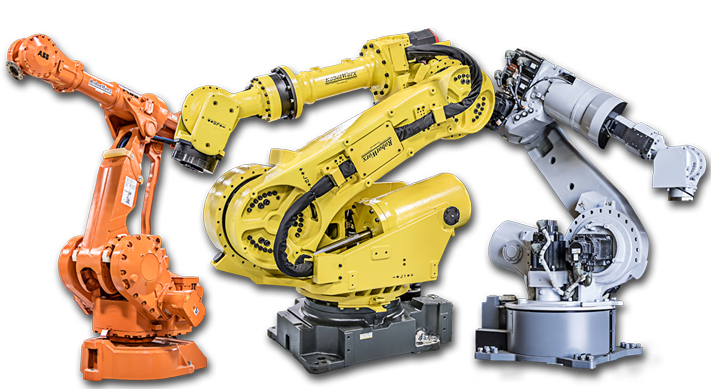AI in Manufacturing: Reinvent Smart Factories from 7 Workflow Stages
Like the first sparks of the Renaissance igniting across Europe, AI in manufacturing is reengineering the landscape, breathing new life into production.
Capabilities of AI in Manufacturing
Enhance the Vision and Understanding: With AI, machines can now “see” products moving down the assembly line. Special camera sensors and computer vision spot defects instantly, even tiny flaws invisible to the human eye. This helps reduce waste and improve quality control. AI also acts as a smart assistant for workers on the factory floor. Intelligent robots can understand verbal instructions and collaborate safely with human teammates. They learn from experience to become more capable and adaptable.
Memory and Foresight: Behind the scenes, AI is the brain that remembers everything and helps make factories smarter. AI systems store all the data from production – every setting, temperature, pressure, and more. Then they analyze these massive datasets to optimize the entire manufacturing workflow. AI is the helper that plans ahead. By detecting patterns, AI can predict future problems before they even happen, whether it’s a machine needing maintenance or material shortages. This keeps operations running smoothly.
🏭 From Concept to Customer: How AI in Manufacturing Shape the Process
| Workflow Stage | Influenced Areas | Traditional Methods | AI Applications | Leading Innovators | Future Disruptions | Examples |
|---|---|---|---|---|---|---|
| 📐 Product Design | Design, Prototyping | Manual drafting, Physical prototypes | AI-assisted design, Digital twinning | Autodesk | Generative design algorithms | Autodesk Fusion 360 – AI-powered design software. |
| 🏭 Production Planning | Supply Chain, Resource Allocation | Forecast-based planning | AI predictive analytics, Real-time optimization | SAP | AI for dynamic supply chain adaptation | SAP Integrated Business Planning – Smart supply chain management. |
| 🤖 Quality Control | Inspection, Compliance | Manual inspection, Random sampling | Machine vision systems, Predictive maintenance | Cognex, Keyence | Autonomous quality control systems | Cognex Machine Vision – Advanced imaging systems for QC. |
| 🛠️ Assembly & Robotics | Assembly Line, Automation | Conventional robotics, Fixed assembly stations | Collaborative robots, AI-guided assembly | ABB Robotics | Self-learning robots | ABB YuMi – Collaborative robot for precise assembly. |
| 📦 Logistics & Distribution | Warehousing, Shipping | Manual warehousing, Standard delivery routes | Automated guided vehicles, AI route optimization | GreyOrange | Drone delivery systems | GreyOrange Butler – AI-powered warehouse automation. |
| 🔗 Supply Chain Management | Inventory, Order Fulfillment | Just-in-time inventory, Manual ordering | AI-driven demand forecasting, Automated replenishment | Blue Yonder | Blockchain for traceability and transparency | Blue Yonder Luminate Planning – Predictive business planning. |
| 🗃️ Maintenance & Service | Machine Service, Downtime Reduction | Scheduled maintenance, Break-fix approach | Predictive analytics, Proactive service | Uptake | AI-driven self-healing machinery | Uptake Asset Performance Management – Predictive insights for industry. |
🌐 Global Trends of AI in Manufacturing
| Theme | Description | Traditional Methods | AI Applications | AI Software | Future Disruptions | Examples |
|---|---|---|---|---|---|---|
| 📈 Smart Factories | Factories equipped with AI-powered systems for efficiency and adaptability. | Manual operations, Siloed systems. | IoT devices, System integration. | Siemens MindSphere | Fully automated production lines. | Siemens MindSphere – Cloud-based, open IoT operating system from Siemens. |
| 🔄 Circular Economy | Sustainable practices through AI optimization of resources and waste reduction. | Linear economy, High waste production. | Material flow analysis, AI for resource lifecycle management. | IBM Watson | Bio-inspired manufacturing processes. | IBM Watson AI – AI for environmental and process efficiency. |
| 🤝 Collaborative Robotics | Robots that work alongside humans to enhance production capabilities. | Segregated robots, Manual tasks. | Human-robot collaboration, Adaptive learning. | Universal Robots | Self-programming robotic systems. | Universal Robots e-Series – Flexible, collaborative robot arms. |
| 🔄 Additive Manufacturing | 3D printing and other additive technologies for complex and custom parts. | Traditional manufacturing, Mold-based production. | 3D printing with AI optimization, Rapid prototyping. | 3D Systems | On-demand production models. | 3D Systems Printers – Advanced 3D printers for industrial use. |
| 📊 Predictive Analytics | Using AI to forecast production needs and machinery maintenance. | Reactive maintenance, Inventory excesses. | Predictive maintenance, Just-in-time inventory. | GE Digital | AI for zero-downtime. | GE Predix – Industrial IoT platform for asset performance management. |
| 🛡️ Cyber-Physical Security | Security measures for protecting connected industrial systems. | Basic security protocols, Physical measures. | Advanced threat detection, AI-powered cybersecurity. | Darktrace | Autonomous response to security threats. | Darktrace Industrial – Cyber AI for industrial systems. |
The implementation of AI in manufacturing has transformed production in many ways. AI in manufacturing enables fully customized output, rather than just mass production. This allows factories to respond rapidly to individual customer needs. Additionally, AI in manufacturing speeds up time-to-market. It adapts production lines quickly to produce new products faster. AI in manufacturing has also improved sustainability by reducing waste through optimized workflows.
By implementing AI in manufacturing, companies have secured an edge in fast-changing markets since it helps factories address supply chain issues, consumer demand shifts, and competitive threats more agilely. AI in manufacturing also lowers costs and improves quality control.
The future looks bright with AI in manufacturing becoming the backbone of smart factories as it will coordinate networks of automated systems seamlessly. Robots, internet-connected sensors, and software will interact efficiently thanks to AI in manufacturing. With AI in manufacturing, production floors will achieve new levels of speed, precision, and productivity.
